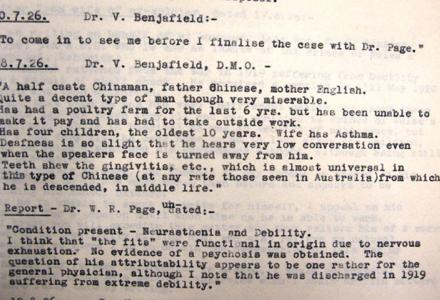Private Joseph Bolton fought in the Second Battle of Bullecourt, the AIF’s second attempt to break the heavily fortified Hindenburg Line. On the first day he was struck by a shell and on the second he died.
‘Just away, not forgotten’, Joseph’s memorial notice reads. But Joseph’s body was very far away, buried in a grave on the other side of the world. A sense of distance made the grieving all that harder to bear. Lydia could only imagine a journey to her son’s grave.
In 1924 Lydia saw a newspaper article about the Young Australia League Tour to Europe. Founded in 1905, the League’s philosophy was ‘education by travel’. Its purpose was to send young men overseas, introduce them to the world, and widen their horizons. The 1924 European Tour included excursions to France and Belgium and some forty Australian boys made up the contingent.
While Lydia Bolton would never be able to visit her son’s grave, others could make the journey for her. Lydia wrote to the League in July 1924. She sent the location of her son’s grave and begged the boys to visit it.
When the Young Australia League arrived in France, they were warmly welcomed. The boys were guided across terrain marked with the scars of battle. Many of the vast cemeteries and great memorials were still being completed, and the landscape was littered with the debris of war.
North of Amiens, the League began their pilgrimage by proxy. They made their way to Vaulx Australian Field Ambulance Cemetery, a tiny graveyard on the edges of the Somme. It wasn’t difficult to find Private Bolton’s grave; buried alongside thirty other Australians. They carried out a makeshift service and laid a wreath for a family that was oceans away. The boys took photographs of the grave. Before they left they picked a posy of forget-me-nots to carry home all the way to Australia. We know from the correspondence that Lydia gained much comfort from that pilgrimage—to that corner of a foreign field forever her own.



